The Gut of the City – Getting our shit together
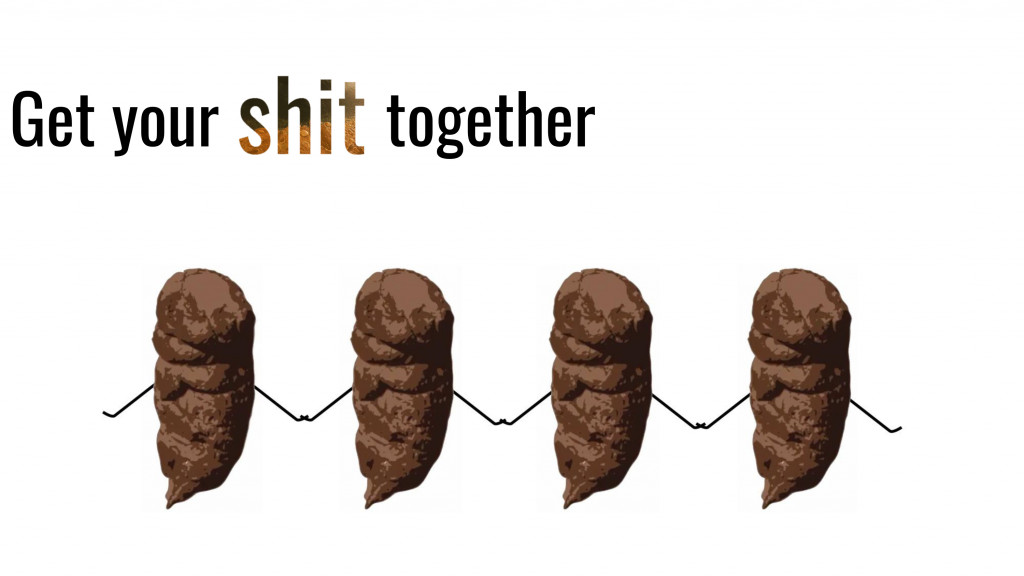
In recent years, a number of scientific studies across Europe and the world have looked into our shit! Which more often than not, is found flowing into our rivers from outdated sewage systems. This is often an indicator to the failing of our sewers to cope with the rapid growth of the worlds cities. Studies have found alarming levels of drugs and other substances coming directly from our toilets.
Other studies have argued the possibility of detecting Covid19 and other viruses in the sewage system even before patients developed any symptoms. If one thing we learned from these studies (apart from the amount of cocaine we feed to the shrimps), is the enormous potential of data collection from our crap.
“Every shrimp caught in a study examining river pollution in the UK had cocaine in its systems, research by King’s College London (KCL) has found.”
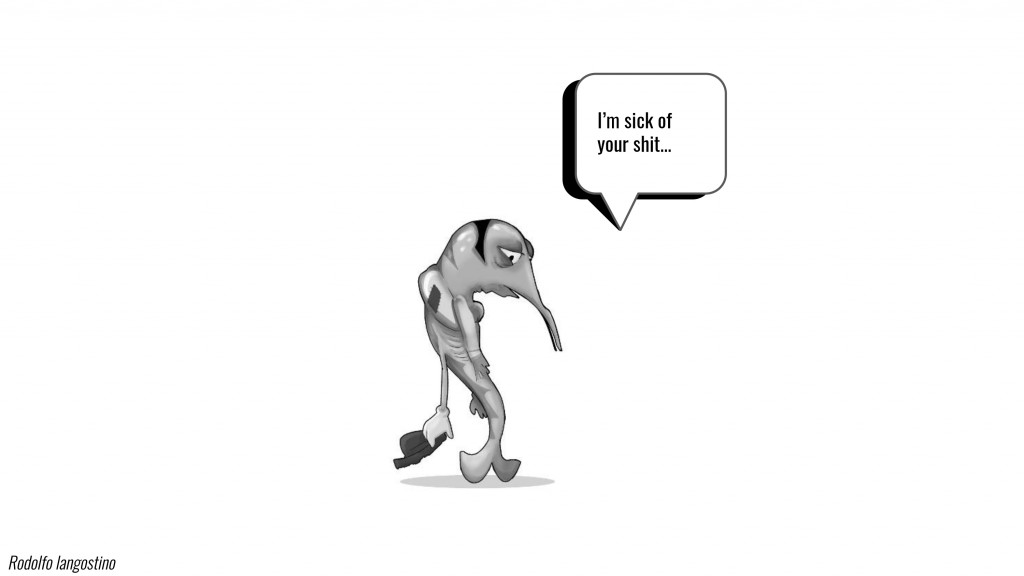
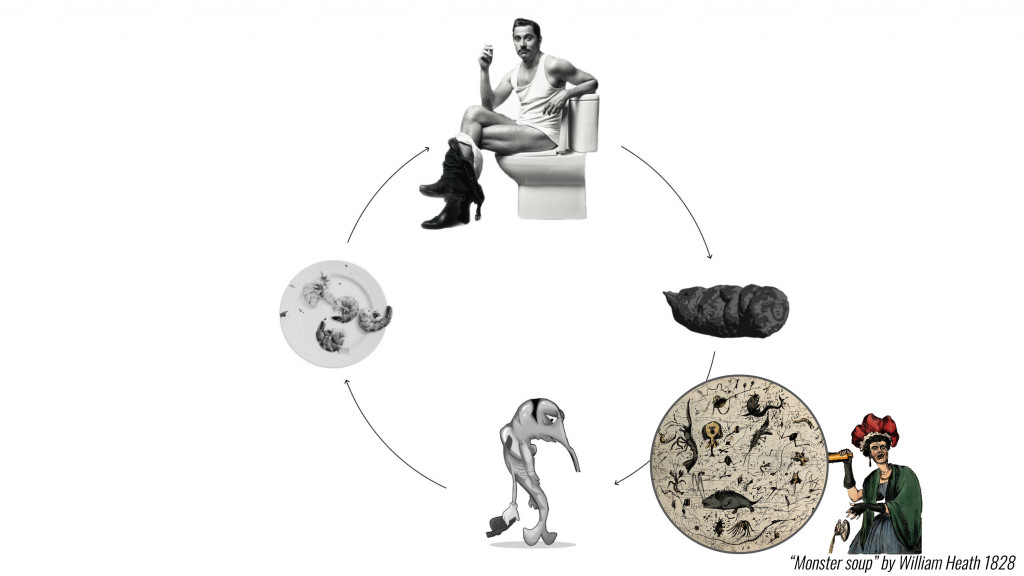
As everything we “dump” comes back to us on our dinner plates, it is crucial that we start taking this subject seriously.

Through sewage, we can detect pandemics and viruses earlier, as well as certain health issues. We can also identify the drug and substance use trends of the city, and possibly understand the emotions of the citizens through a given period of time. Finally, we can understand better and also, prevent the impacts on the ecosystem. 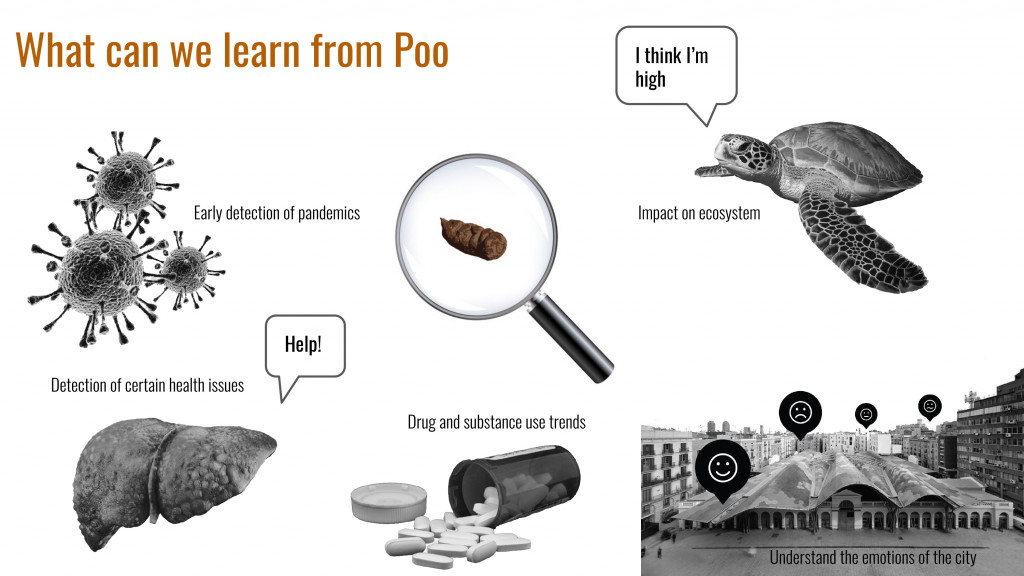
We can understand that citizens and sea life is benefitting from this data as well as the government and the health system of the city. Also, pharmaceutical companies can have more accurate information on the health levels of each city.
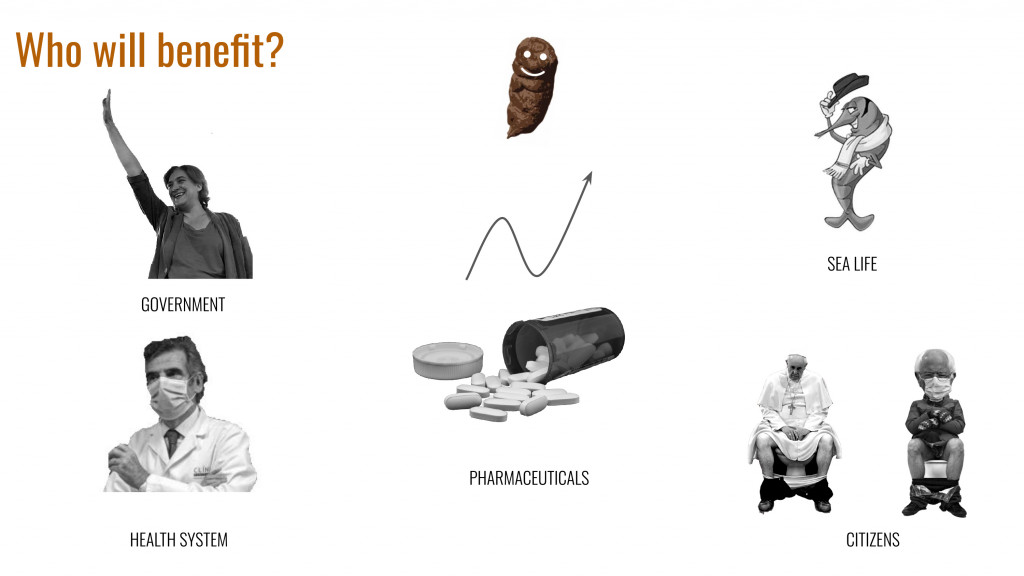
To make the project real, it would be necessary to bring together different key stakeholders from the public and private sectors. From one side, the City Council of Barcelona and the Department of Health of the Catalan Government because of their authority on public health, public infrastructures, and their interest in the citizens’ wellbeing. On the other side, the water company of Barcelona (Aigües de Barcelona), for managing the entire water cycle of the city. Finally, it is crucial to involve specialists with the know how and expertise on the subject, such as hospitals and research centers.
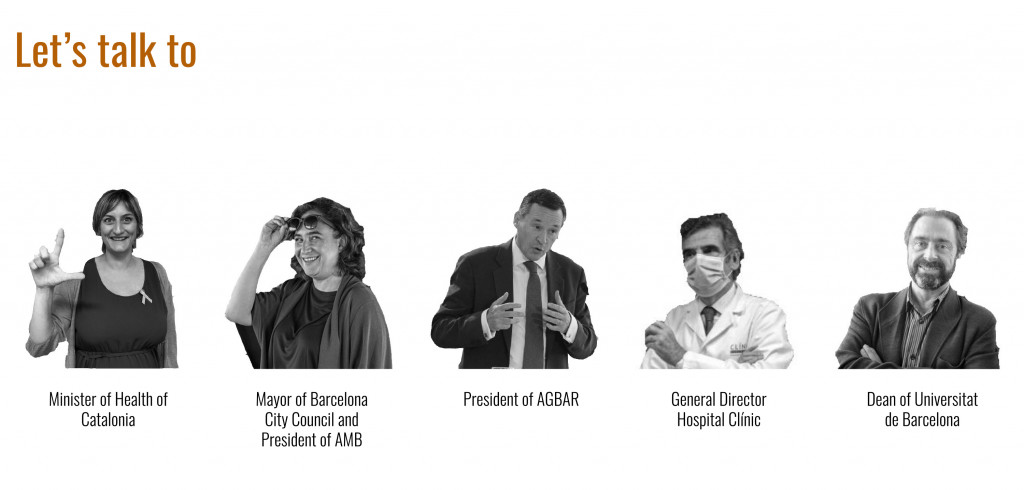

If the main stakeholders believe in the public value of the project, this could be financed by public funds. One of the incentives for public institutions could be directly linked with the potential of savings in the health system and prevention of large scale economic damage caused by pandemics. The availability of new level of health data could help make decisions faster and more effectively. A new public entity, co-managed between the City Council of Barcelona and the Department of Health of the Catalan Government, would be responsible to manage the lead the entire infrastructure.
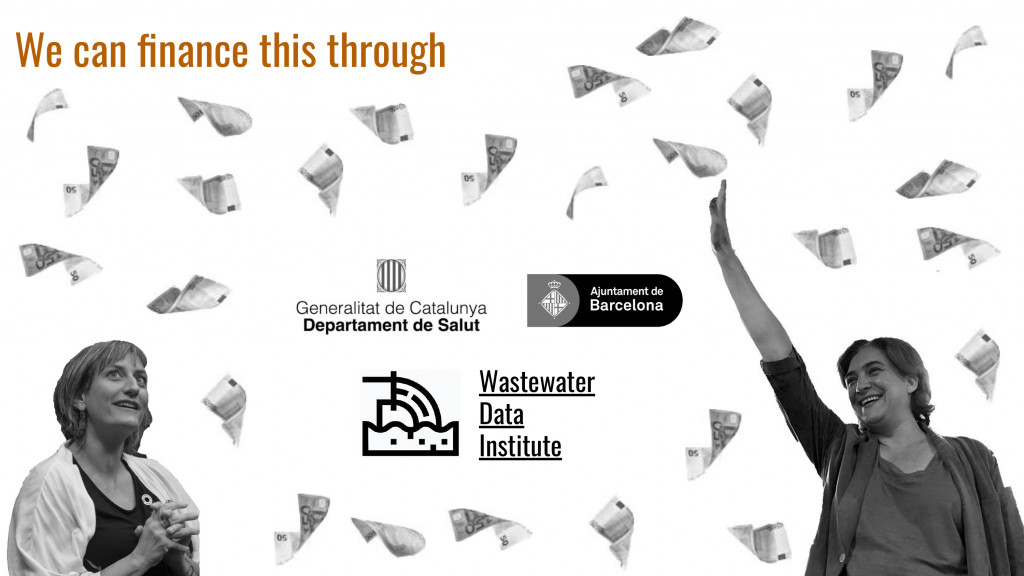
The project proposed is nothing futuristic. Existing technology is already being used for scientific purposes and in short periods, for example in studies related to the COVID pandemic and its spread in urban areas. Particularly relevant is the combination of such technology with specific algorithms that could help to detect faster areas of outbreak (reference
https://news.mit.edu/2020/testing-sewage-for-covid-19-1028).
The distinguishing characteristic of our proposal is its public and permanent feature, being integrated within the public infrastructure and becoming new planning and preventing tool on a long-term basis.
After an analysis of the actual health infrastructure of Barcelona, we determined that the “sample picking points” could be part of the existing division of health areas. We propose to use the existing infrastructure such hospitals and laboratories to collect and analyse the samples. They can also create a data set to control and monitor the current state and evolution of different districts of the city.
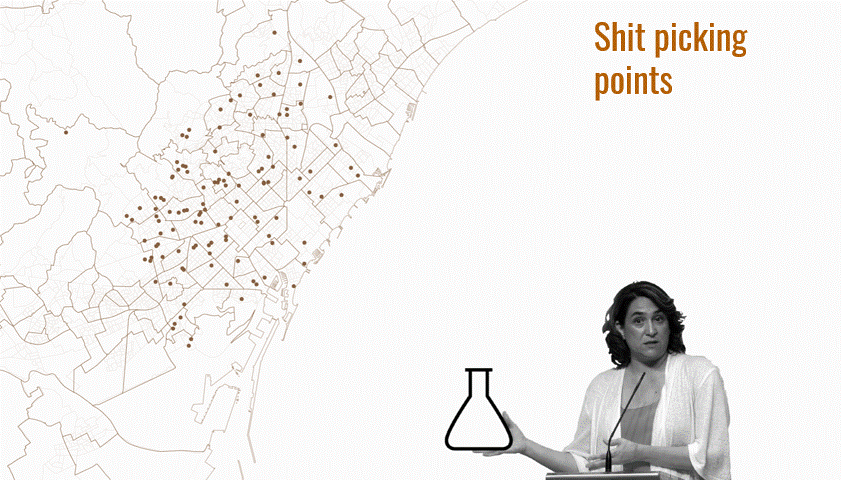
To collect the samples, we propose the use of the current infrastructure of the municipality who maintain the public space. To create an integrated system that collects the samples every two weeks in the main points of the sewage network.

The samples collected are completely anonymous. As these are collected from a pool of thousands of samples mixed together, it guarantees the privacy of the citizens. The data would be extremely difficult to trace back to one person. The result of the analysis determines the general information of the population in the districts where the samples were collected.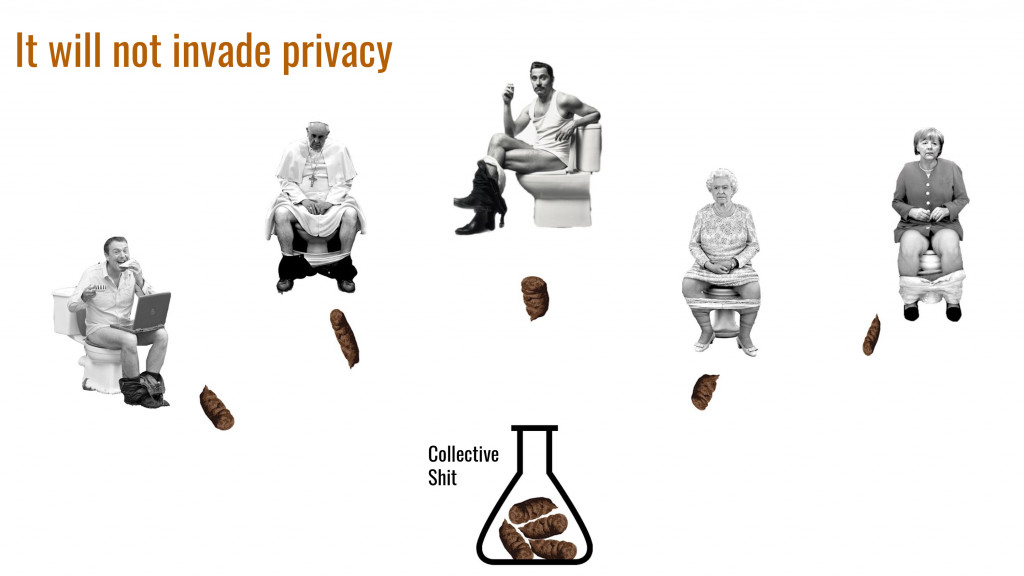
Is there anyway that this could go wrong?
Although highly unlikely, but data in the hands of the government could be viewed as an extra level of citizen surveillance, which could result in people’s rejection of the system, or an alteration of their behaviour. On the other hand, pharmaceutical companies could use this information for more strategic and targeted marketing, and health insurance companies could increase premiums for certain areas of the city based on the risk areas identified by the sewage data. Lastly, it could create “stigma” in certain neighborhoods due to the health of its citizens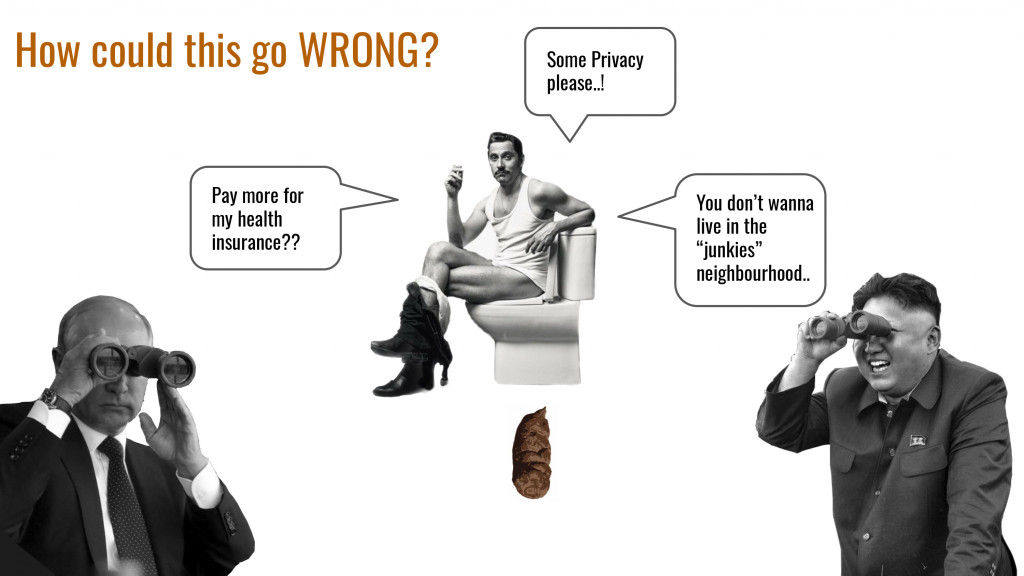
The sewage system is the intestine of our cities, it contains an abundant amount of valuable information. This information can help our governments make more informed decisions when it comes to health, social support and climate protection plans. This in return could help with better protection of our river systems and marine life, more focused and more prepared healthcare.
With this in mind, perhaps we should design our future cities from the inside out. Where sewage is not only a smelly bi-product but rather an integral part of the anatomy of our cities which we embrace rather than flush and forget.

The Gut of the City – Getting our Shit together ,is a project of IAAC, Institute for Advanced Architecture of Catalonia developed at Master in City & Technology in 2020/21 by students: Leyla Saadi, Stefania-Maria Kousoula, Riccardo Palazzolo Henkes & Kevin Aragon and faculty: Nicolay Boyadjiev